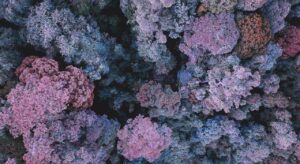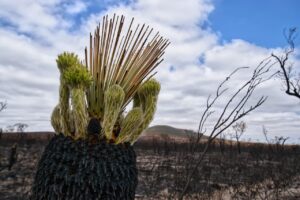Why different mushrooms do not all grow in the same forest
The fact is that a special property of fungi is the ability to form mycorrhiza, a symbiotic mutualistic connection between the mycelium of the fungus and the roots of trees. At the same time, different mushrooms prefer more often to enter into such a relationship with certain tree species. Therefore, for example, ginger mushrooms, as a rule, can be found in spruce forests, and moss mushrooms – in pine forests.
Experienced mushroom pickers know these characteristics of mushrooms, and choose a path in the woods that will lead them to a certain mushroom spot: Mokhovik or chanterelle.
So now frequently encountered in the woods mushroom aspen mushroom, even children can tell it, forms a mycorhiza with aspen, birch, willow, and therefore loves deciduous or mixed forests, often preferring aspen groves – so you and the aspen mushroom. That is where it is necessary to look for it.
In fact, there are several species of chanterelles belonging to the Leccinum species. Those with brown or white caps like to grow in birch or spruce forests, but the most recognizable red aspen is prone to aspen and other deciduous forests. The red aspen mushroom is a wonderful mushroom, in quality only slightly inferior to boletus: it is ideal for soups, for frying and pickling.
But I love it in salted form. If you boil mountain aspen mushrooms, and then salt them cold with currant leaf and garlic – in a week you will not find a better companion to boiled potatoes.
Or, for example, if you already told us about spruce mushroom, which, as its name suggests, should be sought in the spruce forest, its relative purple mushroom is more likely to be seen in the pine forest. And this mushroom, although little-known, but in taste qualities is not inferior to butter mushrooms.
And spotted urchins love coniferous forests, especially pine forests. These mushrooms are usually found in large families and are considered conditionally edible at a young age. But their strong specific flavor does not disappear even after boiling and may not please everyone, although in small quantities can serve as a condiment.
If you are not sure about the head of the Aurochus, its underside with thousands of needle-thorns should dispel all doubts.
Next to the urchins you can often see an amazing mushroom, which used to be considered a relative of the urchins, but in order to be surprised, you first have to lie down in the grass and take out a magnifying glass. This mushroom is called Hydnellum peca.
Its unusual appearance has spawned many colorful names: strawberry with cream, bleeding tooth, devil’s tooth or cake mushroom – whichever your imagination tells you.
There is a theory that these viscous red droplets with a pleasant odor on the surface of the fungus attract insects, which become entrapped in this liquid and dissolve in it, nourishing the fungus. In confirmation of this version, on one of these fungi I noticed an ant stuck in the drop.
Hydnellum is a fairly common mushroom, but from the height of a human being these scarlet drops are invisible. And it “bleeds” only during a certain period of its development. From afar, it looks like an ordinary little hedgehog. These mushrooms will look exactly the same – with light-colored caps and without any signs of scarlet drops – in just a few days.
There are lots of mushrooms in the forest these September days. If someone is new to the forest or is not sure which way to go, the RMK website has a special page with tips on where to go to not only have a great time in the wild, but also to look for mushrooms. And don’t forget to change the search direction in the forest (remember about the compass!) – from fir groves to aspen groves, from pine groves to birch groves – and then your basket will surely be rich in mushrooms.


